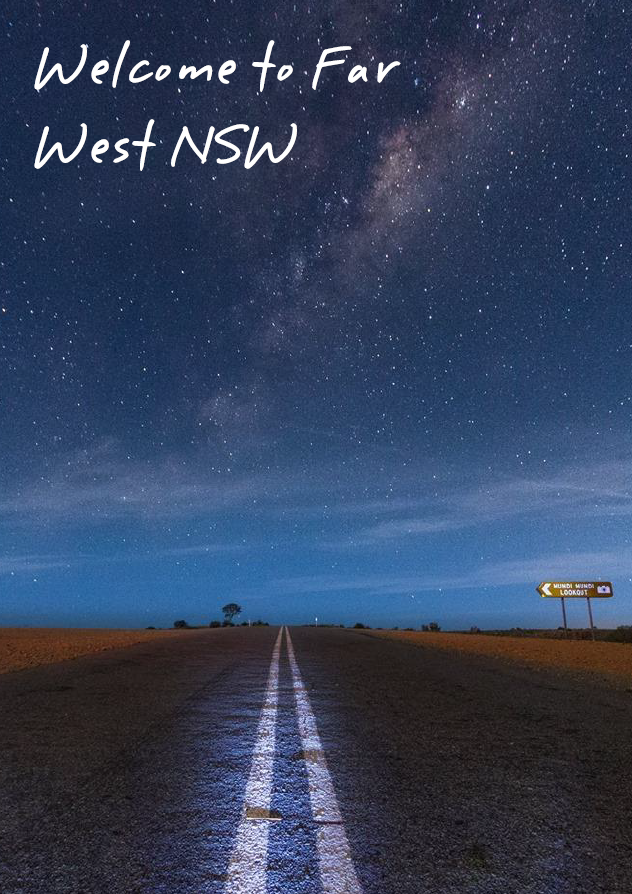Welcome Guide

We are thrilled to welcome you into our vibrant community where you really will have the opportunity to live the life you want. The Far West offers affordable living, the country’s friendliest people, strong education and career pathways, and an enviable lifestyle. You are not going to waste time in traffic getting to and from work, school, or your favourite pastimes, so once you have settled in be sure to find your hobby, sport or other pursuit and get ready to live life. Quality of life is second to none in the Far West, you are going to have time to pursue those things that have been just beyond your reach. We hope this guide provides the information you need whilst you settle into your new home but of course there is so much more than we could include into this guide. Looking for something you can’t find in the guide? Call into the Visitor’s Centre, contact Council or ask a local, they’ll soon point you in the right direction.

The history of Broken Hill is a story of trials and triumphs. There are many opportunities to delve deeper into the history of the region once you have settled in. The account below provides a brief outline of some of the events that have contributed to the rich history of the region. Broken Hill was founded by a young German boundary rider who discovered the rich orebody that became known as the Line of Lode, in 1883. The discovery of the rich line of lode in Outback New South Wales was an important event in the young history of Australia.
- Surveyor and explorer Major Thomas Mitchell was the first reported European in the area in 1835
- In 1844, Charles Sturt named the Barrier Ranges and mentioned a "broken hill". Although Sturt's expedition failed to find the Australian inland sea, their mapping and descriptions of the far northwest helped to open up this unknown region.
- Pastoralists followed the early explorers in the 1850’s.
- In 1860, Burke and Wills established a base in Menindee during their ill-fated expedition to the Gulf of Carpentaria.
- Silverton was established after the discovery of silver and lead deposits in 1883 and reaches its peak population of approximately 3000 by the end of 1885.
Charles Rasp, a German boundary rider who worked at Mount Gipps station pegged the first claim on top of the "broken hill". Rasp thought the hill would contain deposits of tin, but first samples examined in Adelaide showed quantities of lead and zinc with traces of silver. On September 5, 1883, Rasp registered his mining lease. Mount Gipps station manager George McCulloch, James Poole, David James, George Lind and George Urquhart joined, and together they formed the "Syndicate of Seven".